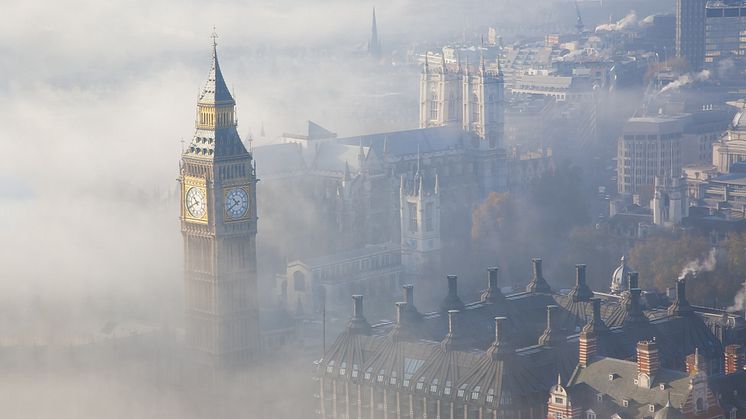
Press release -
Every breath we take – the life cycle cost of air pollution
New report released in the UK
A new report issued by the Royal College of Physicians states that the health impact of Britain’s air pollution is far more serious than previously thought. It states that UK air pollution is the cause of up to 40,000 premature deaths a year. The report also concludes that in addition to the negative effects on health, air pollution also creates very high costs for society and business.
The report highlights the fact that air pollution causes damage throughout lifetime, from a baby’s first weeks in the womb all the way through to old age. For example, lung function naturally develops throughout childhood, now there is clear evidence that long-term exposure to outdoor air pollution suppresses this process. Air pollution is also linked to the development of asthma and cardiovascular diseases in adults (heart disease and strokes). The most vulnerable groups include people in low income areas, those with other health issues such as obesity, heart and lung conditions as well as the elderly and the young.
The report presents an historical overview of air pollution. The London smog of 1952 also referred to as the “Big Smoke” killed 12,000 people. Today’s older generations who were brought up in the 1940s-1950s were exposed to soot and sulphur dioxide from coal burning, in the 1960s-1980s carbon monoxide and emissions from leaded petrol were the pollutants of concern. Today’s children inhale nitrogen dioxide and sub-micron particles, so called PM1 from diesel-fueled vehicles.
The fact that air pollution and climate change are intertwined is also underscored in the report. In other words, many strategies to decrease air pollution are also effective in slowing down climate change. One way to achieve these dual goals is to use energy more efficiently.
What can we do as individuals to protect our health and the environment in a sustainable way? Although it is difficult for us to limit our exposure to outdoor pollution, we can do a lot to improve indoor air. Since we spend most of our time inside buildings, indoor air quality is crucial to our health. Pollution found inside a building is a cocktail of outdoor air pollutants and indoor pollutants such as, tobacco smoke, volatile organic compounds (VOCs) and biological pollutants.
Modern buildings are relatively airtight and usually provided with mechanical ventilation to bring in external air and circulate air inside the building. Filtration can be applied in the fresh-air and recirculation air systems to provide effective control of particles and gaseous contaminants such as nitrogen dioxide. Using low energy air filters it is possible to provide high quality indoor air and also help users meet government requirements for energy efficiency and greener buildings. The ventilation system can be supplemented with stand-alone air purifier such as Camfil’s City M or City S.
Historically; research, government recommendations and consequently public awareness has been limited to airborne particles labelled PM10 and PM2.5 (smaller than 10 microns and smaller than 2.5 microns). However the latest research now indicates that the focus should be put on even smaller particles, those that are 1 micron or smaller in diameter. This is because smaller particles pass the natural barriers in the human body such as nasal hairs and mucus films in the upper respiratory tract and penetrate deep into the fine structure of the lungs where they enter the bloodstream and get distributed around the entire human body.
It is noteworthy that a new international standard for classification of air filters (ISO16890), due for ratification later in 2016 will require that the efficiency of the filter against PM1 be assessed and reported. Camfil strongly support this development. It is a certain way to ensure appropriate high efficiency air filters are used to provide protection of human health from very fine particles.
Camfil provide highly efficient air filters or standalone air purifiers that ensure effective protection from PM1 particles.
Related links:
Full report and commentshttps://www.rcplondon.ac.uk/projects/outputs/every-breath-we-take-lifelong-impact-air-pollution
Camfil – Clean Air Solutions www.camfil.com
Topics
Categories
Camfil is a global leader in the air filtration industry with more than half a century of experience in developing and manufacturing sustainable clean air solutions that protect people, processes and the environment against harmful airborne particles, gases and emissions. These solutions are used globally to benefit human health, increase performance and reduce energy consumption in a wide range of air filtration applications. Our 26 manufacturing plants, six R&D sites, local sales offices and 3,900 employees provide service and support to our customers around the world. Camfil is headquartered in Stockholm, Sweden. Group sales total more than SEK 6.8 billion per year.



